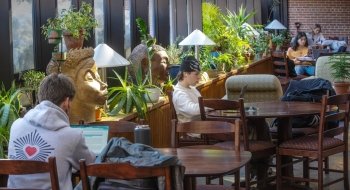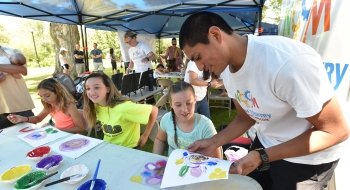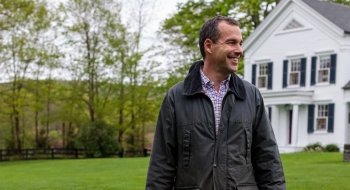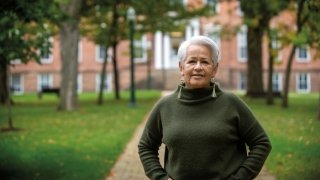
Kaniehtonkie (Guh-nieh-doon-geh) ‘When the snow is flying, like in a blizzard’
One Laurentian family’s story of reclaiming its Mohawk language and culture
Read the Mohawk Translation by
Mary Arquette – Iotenerahtatenion
and Dorothy Lazore – Karihwénhawe
“Kaniehtonkie in Mohawk means ‘when the snow is flying, like in a blizzard,’” says Marjorie Kaniehtonkie Barnes Skidders ’79, M’90, who was born on a wintry night in January to Ann Barnes ’80 and Tony Barnes. “According to my mother, I was born during a winter storm, so my name tells the story of my birth.”
Skidders, a member of the Akwesasne Mohawk Nation, is also a member of a Laurentian family with unique ties to St. Lawrence. In 1979, Skidders, together with her mother Ann and her sister, Barbara A. Barnes M’79, walked across the stage at the Commencement ceremony and accepted their St. Lawrence degrees.
“As a kid, I attended the Upward Bound program at St. Lawrence University,” says Skidders. “Being on campus, I thought, ‘Yeah, I want to go to university here.’” After beginning her college career at Cazenovia College, Skidders said no to Syracuse University and yes to transferring to St. Lawrence to study fine arts. Later, she secured two master’s degrees in education, one from SUNY Potsdam and another from St. Lawrence.
Skidders began taking education classes as an undergraduate student, thinking it would be a good fallback if she couldn’t make an art degree work in her favor. Her instincts paid off, and she ended up teaching and serving in administration for nearly 30 years at the Akwesasne Freedom School, Akwesasne Mohawk Board of Education, and the Franklin County BOCES programs. Skidders has recently taken the helm of the Akwesasne Mohawk Nation newspaper, Indian Time, as editor-in-chief.
For her mother, the motivation to get her teaching credentials was more complicated and painful.
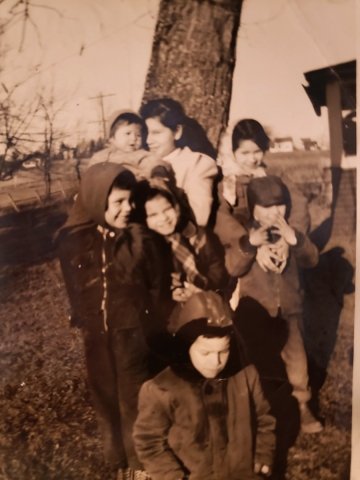
“My mom had nine kids,” says Skidders, “and once they all were in or finished high school, she went back to school to take education classes.” Barnes, along with three others—Jean Herne ’80, Rita Jacobs ’80, and Louise Cook ’84—went on to complete the St. Lawrence bachelor’s degree program in education offered on site at Akwesasne which gave them the credentials to teach Mohawk language and culture in the area schools.
Barnes is a survivor of the Thomas Indian School, one of the numerous residential schools operating throughout North America over the 19th and 20th centuries. Along with thousands of other Native American and First Nation children across the continent, she had her language, culture, and connection to family stripped from her when she was a child. These U.S. and Canadian government-sanctioned boarding schools forcibly removed small children and adolescents from their families. Once at the boarding school, the children were subjected to cruel and often fatal conditions to eradicate Indigenous languages and culture. This violent history is once again under scrutiny with the recent discovery of hundreds of unmarked graves on the grounds of several residential schools in the U.S. and Canada.
“Every region across the U.S. and Canada has suffered this trauma,” says Skidders. She had just read the news that the remains of nine children from the Rosebud Sioux Tribe had been returned to their homeland for a proper burial. These children were among the 180 killed over the past 140 years at Pennsylvania’s Carlisle Indian Industrial School. In June 2021, 751 unmarked graves were discovered by the Cowessess First Nations at the Marieval Indian Residential School site in Saskatchewan, which the Roman Catholic Church operated between 1899 and 1980. Just weeks before, an equally horrific discovery of 215 unmarked graves of Indigenous children was reported at the site of a similar residential school in British Columbia.
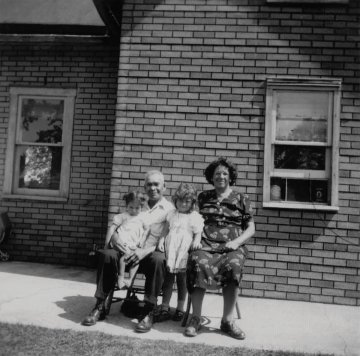
“At least on the Canadian side, they have acknowledged it and apologized,” says Skidders. She admits the difficulty of talking about this cruel history is deeply personal, knowing her mother endured extreme hardships and abuses in New York State’s Thomas Indian School as a young child.
“They weren’t allowed to speak Mohawk or Seneca or Oneida—or any native language,” says Skidders, who reviewed the school’s records confirming that children from the Seneca, Mohawk, and Oneida nations were kept, often for years, without seeing their families.
“She was fluent when she went, but she lost a lot of the language,” says Skidders. When her mother returned home, she had to relearn her native tongue and traditions and reconnect with her family. Although she recovered her language skills, having been fluent as a child, healing from the emotional and physical trauma of years at the Thomas Indian School was a more complicated process.
“She made it home, but my mother was a changed person after that,” admits Skidders. “She had lost most of her language, all of her customs and traditions, and most of her relationships with her family. She had to relearn and reconnect to all of that.
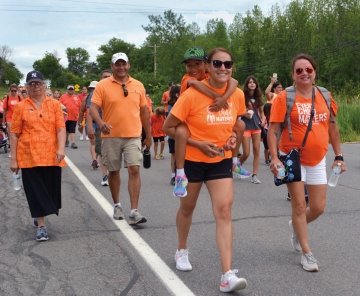
Barnes did not teach her nine children to speak Mohawk, which was only used in the household by her and her husband when they did not want the children to understand what they were saying. According to Skidders, her mother struggled, at times, with alcohol abuse. The ability to show affection also did not come easily, and it took many years to open herself back up to her loved ones.
“My mother was such a paradox of a person,” recalls Skidders noting her struggles on the one hand, but on the other hand, sustaining a high-functioning schedule for her nine children, making sure everyone was up, fed, and ready for the school bus.
“She did the best she could with what she had and what she had gone through,” says Skidders, remembering her mother as a voracious reader and lover of classical music. “I think every one of my brothers and sisters has stories about the challenges that we went through. But, in the end, you remember the good stuff, her love of learning, and the many good things she taught about life. Education and to never stop learning—that was the biggest thing for her.”
It seems appropriate that Barnes’ Mohawk name was Karakwas, which means “picking up something.” After receiving her degree from St. Lawrence, Barnes and her Akwesasne colleagues picked up the work of building a Mohawk language curriculum in the area schools.
“They were the first,” says Associate Professor of Education Peter Ladd, who taught in both the education and counseling programs offered at Akwesasne from 1976 until 2019. “This was a big deal at the time. In the decades before, if you spoke Mohawk in school, you were thrown out.”
“We knew that they would be among the first ones actually to start something nonexistent,” continues Ladd. “The impact has been enormous. This change was accepted as critically important, and no one had to be ashamed to speak the language. That was a tremendous boost, I think, for the morale of the entire community—powerful stuff,” says Ladd

These four women sparked a cultural revitalization of the Mohawk language. According to Ladd, “Those first four listened to their culture and worked that into our graduate courses at St. Lawrence,” he says. “I think for me, one of my greatest accomplishments was being a part of getting those four women certified. It has been very important to me.”
Now, because of these women and many St. Lawrence-certified teachers, counselors, and administrators working in Akwesasne, several Mohawk language programs for all ages and backgrounds exist on both the U.S. and Canadian sides of the territory. And, like Skidders’ mother, who reclaimed her Akwesasne Mohawk identity through reclaiming her language, hundreds of residents have been able to strengthen their understanding and connection to their culture through their study of Mohawk.
For Skidders, understanding the Longhouse as the political and spiritual center of the community has strengthened her relationship to her Akwesasne Mohawk heritage and language. Through the involvement in the Longhouse ceremonies and inter-nation diplomacy and travel of her late husband Brian, Skidders gained insights into how language is one of the keys to having a more intimate relationship with the traditions and ceremonies. Brian’s given Mohawk name at birth was Tekanatsisere (carry two buckets), and his condoled chief name was Orenrehgowah (mighty eagle), each given back to the Longhouse after he passed away in order to be given again in the Mohawk tradition.
“I don’t speak my language very well at all,” says Skidders, “but everything I know from the Longhouse ceremonies and the words being spoken helps me have a deeper, richer knowledge of who we are.”
It was at a community meeting in Generation Park, Akwesasne, to discuss plans to honor all of the children of the residential school tragedies with a relay-march to Ottawa that Skidders found herself standing up and saying four words: “I will do it.”
“Long ago, runners would go from one village to another, carrying a wampum and bringing a message to the village chief,” explains Skidders. “I don’t even know what made me do it because I hate running, but I thought, ‘I can run that.’”
“I told my sister Leona, ‘You gotta be there at the end. You gotta be there for mom.’”
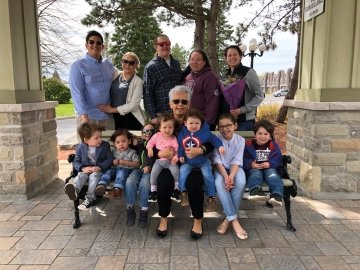
On Canada Day, July 1, 2021, more than 1,500 members of the Akwesasne Mohawk Nation marched, preceded by a small group of runners. Skidders and her two grandsons, Tehokahion, age 5, and Tarihowaneh, age 6, ran the second mile, carrying the wampum. Skidders carried the small pouch of tobacco to burn at the exchange of runners.
“My grandson was just so serious about carrying the wampum,” she says. “We did our run, and at the end, he cried. I think it helped us all to heal.”
“I don’t want to say that we are moving on,” she clarifies, “because you can never move on from that, but we are moving forward. That, and we, as Native Americans, have been told to move on from our past collective traumas. You can’t until you begin to heal first.”
“It is very difficult to find the words,” Skidders confesses, but she suggests, perhaps, skén:nen is what her community is working toward achieving. “It means something like ‘peace,’” she adds, “maybe not literally, but I think that would probably be a good start.”


